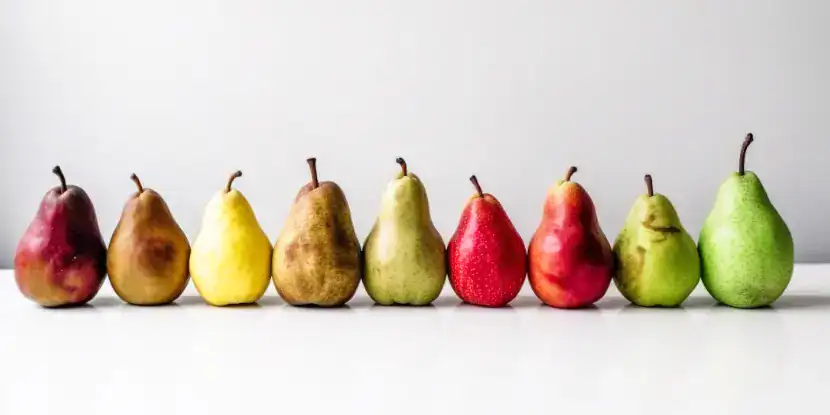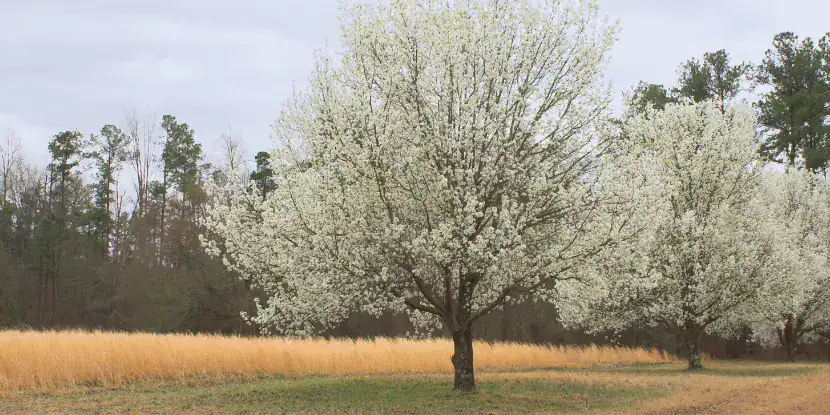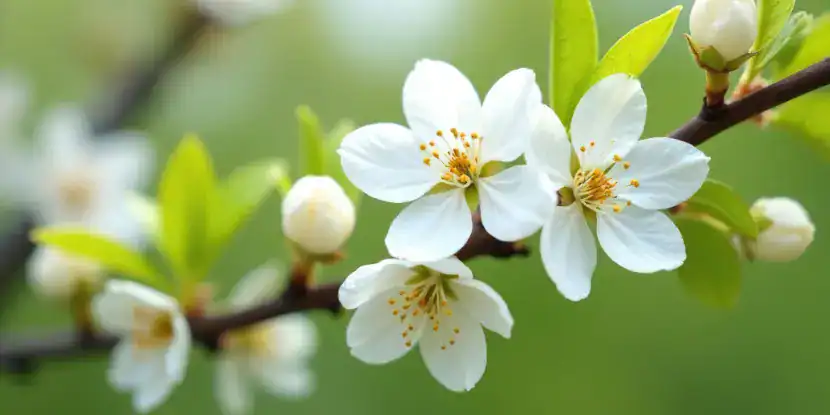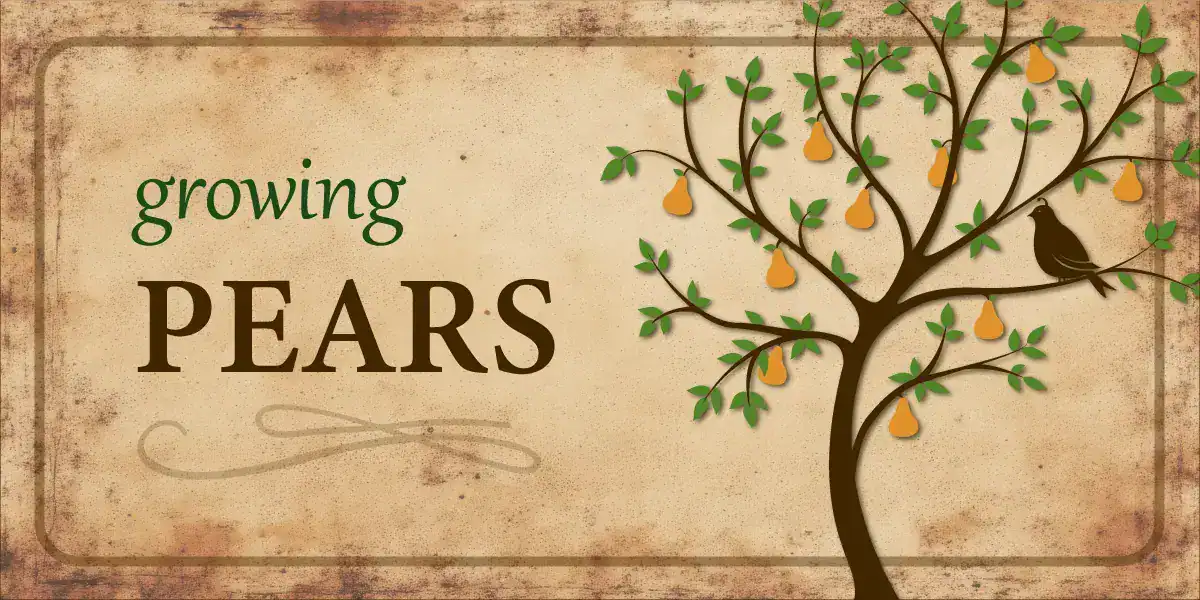The 12 Days of Christmas features 12 repeats of “partridge in a pear tree.”
Partridges and pear trees were popular in 18th-century England.
But did you know that in California, we have both?
Pear trees (Pyrus communis) are native to Europe and parts of Asia. The Romans introduced them to Britain, where they were later used as boundary markers.
Early colonists transported pears to North America. As settlers moved westward, they carried pear seeds and saplings, leading to widespread cultivation.
California seems an unlikely pear-a-dise because traditional pear trees need long, cold winters to thrive. But newer low-chill varieties are well-suited to warmer climates, and in fact, California is the third-largest pear-producing state in the USA.
So what’s stopping you, fruit lover? Will you grow a pear tree or two for the partridges?

An AI partridge in an AI pear tree, come to life!
What Are Chill Hours & Why Do They Matter?
Chill hours measure the amount of time temperatures stay between 32°F and 45°F.
Pear trees rely on a certain number of these chill hours to rest and prepare for fruit production. Traditional varieties require up to 1,000 chill hours, which are hard to come by in sunny Southern California.
Low-chill varieties, however, can bear fruit with as few as 100 to 400 chill hours, making them ideal for the region’s warmer zones (USDA Zones 9 and 10).
Low-Chill Pear Varieties for Southern California
The list we provide here is not exhaustive, but is meant to plant the notion that pear tree production is possible.
- Hood: 100-150 chill hours; soft, medium-sized fruit with a smooth flavor.
- Flordahome: 150-250 chill hours; perfect for home gardeners with limited space and resistant to fire blight.
- Keiffer: 200–300 chill hours; produces crisp fruit excellent for canning.
- LeConte: 200 chill hours; known for its light, crisp texture and sweet flavor.
- Pineapple: Around 200 chill hours; has a unique, pineapple-like flavor and is suitable for fresh eating and preserves.
- Asian Pears (e.g., Shinseiki, Hosui, 20th Century): Typically need 250–400 chill hours; prized for their crisp texture and juicy sweetness.

Green pears, red pears, and Bosc pears all lined up for a photoshoot.
Pollination Considerations
While some pear varieties are self-fruitful, planting two varieties can enhance fruit set and yield. The varieties you choose should have overlapping bloom times to facilitate cross-pollination.
Height & Spread
- Pears can grow up to 20–30 feet tall, with a spread of 15–20 feet.
- Dwarf varieties can be maintained at 8–10 feet tall.
Optimal Growing Conditions
Light
Pear trees thrive in full sun, needing at least 6–8 hours daily to maximize growth and fruit yield.

Asian pears are apple-shaped, crisp, and sweet.
Temperatures
Low-chill varieties tolerate Southern California’s warmer winters but avoid planting in frost-prone areas.
Soil
- Pear trees prefer well-draining soil with a pH between 6.0 and 7.0.
- Incorporate compost to improve soil nutrient levels.
Propagating Pear Trees
There are two main ways to add a pear tree to your garden:
- Nursery-grown saplings are the easiest option. They’re often grafted onto hardy rootstocks, ensuring a healthy start.
- Grafting and budding allow you to grow a pear tree from cuttings, which advanced gardeners may find fun and rewarding.
Steps for Planting
- Plant in late fall or early spring.
- Choose a sunny spot with well-draining soil.
- Dig a hole twice as wide but the same depth as the root ball. Enrich the soil with compost.
- Place the sapling in the hole with the graft union above the soil line.
- Gently backfill and pack soil around the roots.
- Water thoroughly.
- Add a 2-3 inch layer of mulch, keeping it away from the trunk to prevent rot.

Flowering pear trees in the orchard. Fruit pear trees flower just like ornamental pears.
Caring for Your Pear Tree
Water
- Young trees need frequent watering (about twice weekly in the first year).
- Mature trees require less water, roughly once a week during dry spells.
Fertilizer
- Apply a balanced fertilizer in early spring to boost growth.
- Avoid over-fertilizing, which encourages foliage over fruit production.
Pests & Diseases
- Watch for common pests like aphids, mites, and scale insects. Use insecticidal soap or neem oil to control infestations.
- Pear trees are prone to fire blight, a bacterial disease that causes wilting. Remove infected branches immediately and disinfect pruning tools between cuts.

Close-up of pear blossoms in the spring.
Pruning
- Prune annually during the dormant season to shape the tree and remove dead or overcrowded branches.
- Proper pruning ensures better air circulation and sunlight exposure.
Harvesting & Storage
- After bloom, most pear varieties take 100–160 days to produce mature fruit.
- Pears ripen off the tree. Harvest them when firm but lightly green (test the neck for slight softness).
- Allow the picked pears to ripen further at room temperature.
- Store pears in a cool, dark space to extend freshness.
- For longer storage, refrigerate them at 30-35°F.

Close-up of pear fruit ready for harvest.
FAQs: Growing Pear Trees
Q: Can I grow traditional pear varieties in Southern California?
Traditional varieties usually require more chill hours than Southern California provides. Opt for low-chill types.
Q: How long does it take for a pear tree to bear fruit?
On average, pear trees take 3–5 years to produce fruit, depending on the variety and care.
Q: Can I grow pear trees in containers?
Yes! Dwarf varieties thrive in large containers with good drainage. Give the tree plenty of sunlight and water.
Q: How far apart should I plant multiple pear trees?
Plant trees about 15–20 feet apart to give them room to grow. Dwarf varieties need less space, at around 10–12 feet apart.

A pear tree heavy-laden with fruit.
Q: Do I need two pear trees for pollination?
Most pear trees benefit from cross-pollination. Plant two different varieties with overlapping bloom times for best results.
Q: Can I plant pear trees during summer?
It’s better to plant pear trees in late fall or early spring when the weather is milder.
Q: What tools do I need for pruning?
A pair of sharpened pruning shears, loppers, and disinfectant for cleaning tools to prevent the spread of diseases.
Q: Are pear trees drought-tolerant?
While they handle short periods of drought, consistent watering ensures the best growth and fruit quality.

